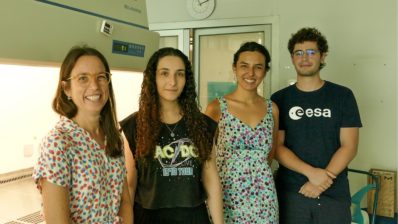In a recent study, researchers from the Institute of Evolutionary Biology (IBE) have found a so far unknown group of organisms that would be related to the holozoa, the closest living unicellular relatives of animals.
To do it, the Multicellgenome Lab team, led by Iñaki Ruiz-Trillo, has analyzed more than 1,000 ocean water samples from 210 different points on the planet collected in the Tara Ocean project, in which they have identified more than 2,000 unknown sequences .
The analysis has been carried out by combining two powerful data analysis techniques: metabarcoding, or massive sequencing, and the analysis of complex DNA networks.
“Combining metabarcoding and gene similarity networks has allowed us to analyse millions of DNA sequences from a small sample of water and also know what type of species inhabit that ecosystem with great precision”
Iñaki Ruiz-Trillo (IBE)
With these techniques, they have found an unknown group of organisms that could be related to choanoflagellates, the closest single-celled organisms to animals.
In addition, in the study they have made an analysis of the distribution of holozoans around the world for the first time.
“Our analyses provide a hint as to where to begin to look for new species or clades. The tree of life is immense, and discovering new microbial species is a hard, time-consuming job” said Alicia Sánchez Arroyo, first author of this study.
The study represents a further step in understanding the evolutionary process towards multicellularity, and ultimately, the history of animals.
Arroyo, A. et al. (2020) Gene similarity networks unveil a potential novel unicellular group closely related to animals from the Tara Oceans expedition. Genome Biology and Evolution, Volume 12, Issue 9 (2020), 1664 – 1678






